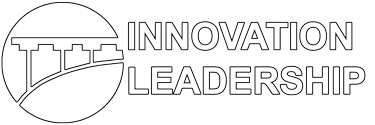
Leadership Development…the New Math
“High Potential is a fuzzy concept that does not consider luck, team support and changing company needs”.
“Programs take too long to demonstrate results that matter or are confounded by external events”.
“As a strategic investment, development must demonstrate a clear return, as our other investments must also do.”
“High-potential programs can have negative impact on the morale of High-performers because they can create a perception of “haves” and “have-nots”.
“Anyone can succeed with enough mentoring, rotational assignments and special training”.
“The application of the GE Nine-box Model has devolved into a ranking system primarily used for compensation planning”.
Yes, those are some of the perceptions that C-suite leaders have shared with me over the years about Leadership Development.
Over the last two decades, I have been involved in a variety of public and private organization change efforts that have been notable in their requirements to solve both immediate operational challenges outside of the purely Human Capital realm while also creating higher levels of leadership excellence. While unusual two decades ago, these simultaneous needs are now commonplace in virtually every industry and company. This reflects the evolving view of Human Resources as a Business Partner that has the same level of performance expectations and contributions to the business as any other function. Be careful what you ask for…
Through these experiences, I have developed a few guiding beliefs and actions:
Development that is divorced from obvious role or organization priorities rarely succeeds.
Therefore, we need to always demonstrate a knowledge of what the actual priorities of the organization are now and in the future, and make sure that every development event, action and resource demonstrates a clear connection to those priorities. Anything else undermines credibility and is a time-sink with no perceived benefit to those involved.
Most C-suite leaders have self-developed through successfully confronting unplanned challenges requiring new skill sets. This proved the efficacy of learning through experience and rising to the challenge. This suggests that accelerated development needs to resemble their experience to have immediate executive face validity.
Therefore, we need to imbed actual challenges determined by leadership into a process so that it resembles the performance-oriented experience of those who must financially sponsor, mentor and live with the results. This also accelerates development.
The 70 (on the job)/20 (coaching and observation)/10 (formal classroom) development hierarchy has been tested and validated, so should be clearly reflected throughout development programming. Of the three, the middle 20% is where acceleration and relevance occur.
My thoughts over the last few years have really changed, in how I now see Coaching to be a key element of accelerated development. Coaching is the essential bridge between the formal (expensive) and on-the-job (confusing) experiences. It does this while focusing the learner on the appropriate core leadership lessons without reliance on trial and error. This goes back to what I mentioned about the way C-suite people mainly self-develop. Relying exclusively on experience is fine, as long as no alley is blind and no message is mixed. Actual experience is not as efficient because sometimes we learn the wrong things (how to work around the system) or get lost in the daily scrum and miss the important point. That’s why unguided development takes so long…blind alleys and missed insight. Coaching greatly assists in keeping the executive learner on track.
Development processes must be faster than the pace of the business or they will be confounded by external events.
So, we need to demonstrate an understanding of the actual pace of the business or the existential challenges the business faces, by using the same hard metrics of a profit center and demonstrating strategies linked to enabling strategic success for others. The first way we can do this is by articulating the organization’s time horizons and making sure our plan/process stays ahead of these dynamics. Delivering better leaders or results that no longer matter is not a sound investment.
Despite over fifty years of research, it is still difficult to prove the direct ROI of a pure development program.
Therefore, we can benefit the business and ensure lasting sustainability by using hybrid models incorporating formal learning, assessment, action-learning, mentoring, rotations, special assignments and others. We will then be able to measure the results across the activity spectrum, rather than only as a single outcome measure. In addition, it encourages us to include learning activities that clearly have a concrete payback. That is why I usually include a strong innovation/action learning approach focused on actual challenges; they earn back the developmental investment and immediately demonstrate relevance to the sponsors. This replicates how adults and organizations actually learn and measure success.
External development resources can be useful. Internal resources for guidance, coaching, administration, oversight and assuring relevance are essential.
Therefore, it is helpful to make sure that company heroes, officers and learning experts are utilized as much as possible and in a prominent way. The role of the consultant is thought leader and process resource. In two years, the consultant may be forgotten…the heroes, officers and learning experts will still be reinforcing learning every day.
The fastest way to create new norms around development is to demonstrate those norms with clearly successful individuals, not just those with corrective priorities.
Therefore, we can accelerate a cultural change by auditing our methods against the aspirational culture of the future. The methods should not demonstrate the culture we desire to replace, but rather a new culture we want to build. Nothing does this faster and demonstrates your commitment than applying new cultural norms to those who most people would identify as the successful leaders today. In addition, no set of leaders is more likely to adopt these aspirational norms than individuals with self-confidence built on success.
Experiential Learning that combines some formal learning with emotionally enhanced experience-based team learning on relevant (not simulated) organization challenges creates lasting personal change.
Therefore, we should seek to create experiences that are both emotionally and cognitively impactful. Learning that is connected to an emotion (any emotion) has been proven to have the highest levels of retention and access in new situations. This is an essential component of Learning Agility, the most accurate predictor of leadership success. We often do this through the inclusion of content that heightens the learner’s senses of urgency and personal accountability (the two attributes most valued by leaders).
Programs that only focus on general “high potential” leaders are being supplanted by “Acceleration Pools” with horizons of three years or less.
We know that learning naturally happens in everyone at its own pace through trial-and-error. The goal of planned Leadership Development then is threefold:
- To accelerate the pace of successful development to meet identified needs
- To create an improved commitment to Learning and Change on the part of all employees (not just “hi-po” group).
- To create a reliable pipeline of people who enhance the business while keeping its best values alive.
The goal should not be a one-to-one replacement, but increasing the internal candidates for a variety of positions. There is room for multiple avenues of development to co-exist. We can accelerate succession for an immediate resolution of a RED opening with enabling a wide selection of high-performers to have planful development with specialized development for those people identified as high-potentials.
It’s not binary, people.
I appreciate your thoughts and comments…
